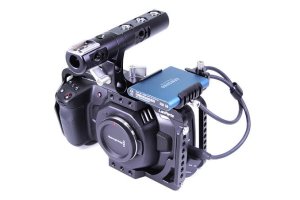Also, the different AF has been debunked. I bet you watched that stupid MonkeyPixels video where the guy didn't even have a R5C.
If you look at the Canon USA site under specifications, for the R5, it says "Dual Pixel CMOS AF" under the photo section. There is no I or II. Under the video section, it also says "Dual Pixel CMOS AF".
So for the R5C, on the US site, under the photo section, it says "Dual Pixel CMOS AF II". Under the video section, it says "Dual Pixel CMOS AF". So if you compare the US sites, it appears the R5C is actually better than the R5 (when it's not).
On the Europe site, for the R5C, it says "Dual Pixel CMOS AF II" for photo and "Dual Pixel CMOS AF with Eye AF and EOS iTR AF X" for video.
On the Europe site for the R5, under the photo it say s"Dual Pixel CMOS AF II" but under the video section it says "Dual Pixel CMOS AF with Eye/Face Detection and Animal Tracking AF, Movie Servo AF Manual".
So both are the same!!! The R5 and R5C have the same system.
High Image Quality featuring a New 45 Megapixel Full-frame CMOS Sensor. DIGIC X Image Processor with an ISO range of 100-51200; Expandable to 102400*1. High-Speed Continuous Shooting of up to 12 fps with Mechanical Shutter and up to 20 fps Electronic (Silent) Shutter. Dual Pixel CMOS AF II...

www.usa.canon.com
Shop our selection of DSLR Cameras. Explore specs, colors, and more from Shop Canon Business U.S.A., Inc. to find the right product for you.

www.usa.canon.com
Canon EOS R5 specifications and key features in detail.

www.canon-europe.com
The ultra-compact hybrid cinema camera with 8K up to 30 fps and VR capabilities

www.canon-europe.com


